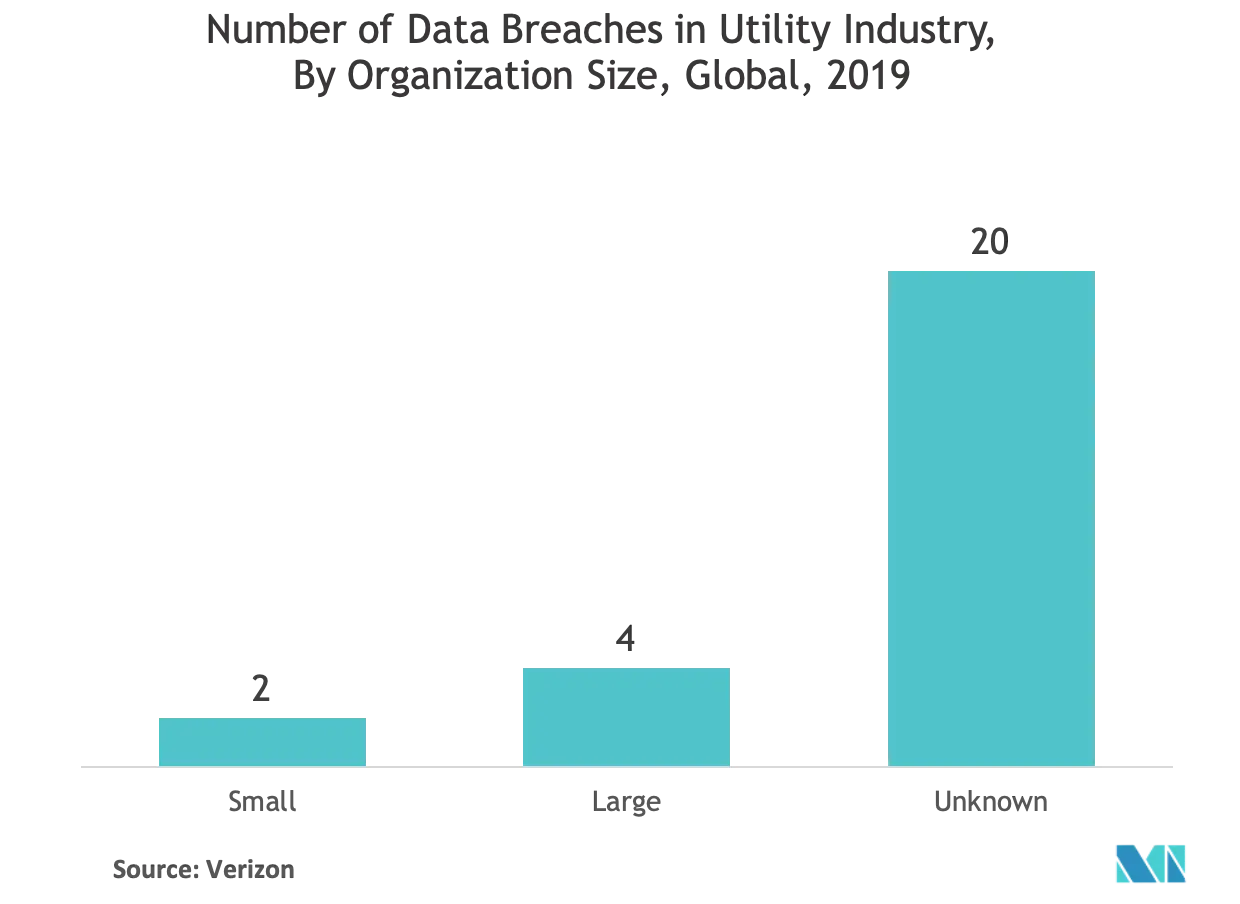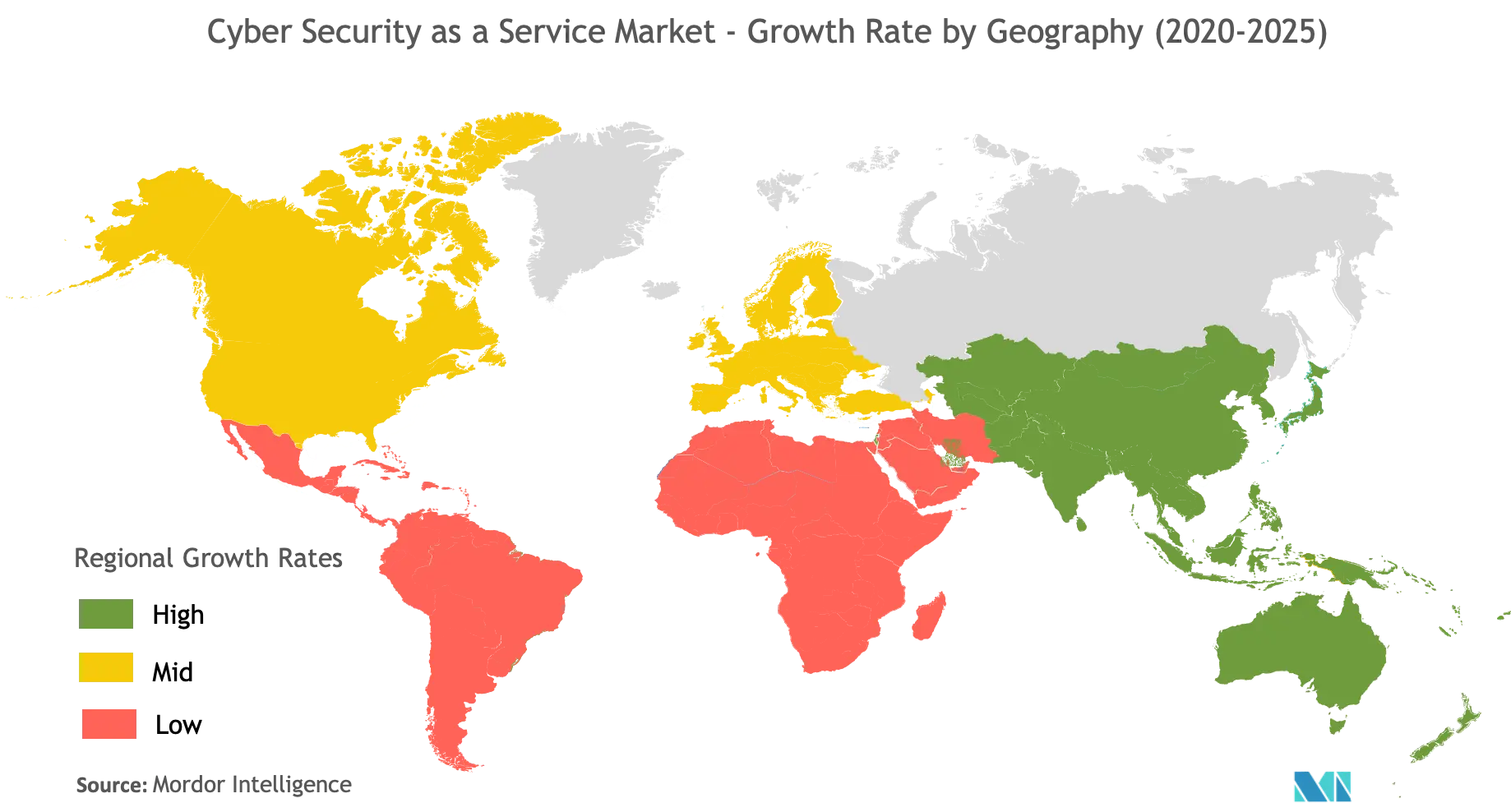Market Trends of Cyber Security as a Service Industry
This section covers the major market trends shaping the Cyber Security as a Service Market according to our research experts:
Energy and Utility Sector Drive the Market Growth
- The energy and utility sector, globally, hosts a large share of critical infrastructure owned and operated by a country. Highly modernized and automated critical infrastructure, such as the electricity generation sector, oil and gas establishments, and water processing and treatment plants, are highly vulnerable to cyber and physical threats and have been easily targeted by hackers and evil organizations, and state actors.
- According to the Ponemon Institute Report, three-quarters of energy companies and utilities have experienced at least one recent data breach. The physical vulnerabilities for electric power are related to generation facilities, substations, and transmission lines. Large oil refineries are also primary targets. An increase in the transportation of oil through pipelines over the past decade offers a vast and largely unprotected target array. Oil and gas vulnerabilities include lines at river crossings, interconnects, pumps, valves, and compressors, and natural gas city gates.
- Many electric companies operating and protecting critical infrastructure require a strong working partnership. Further, power grid and energy security require private-public cooperation and regulatory coordination among industries, DHS, the Department of Defense (DOD), and the Department of Energy (DOE). The power grid and other industrial infrastructures have been increasingly subjected to both physical and cybersecurity attacks.
- Energy infrastructure industries are more susceptible to outbreaks, such as COVID-19, as such organizations handle a country's critical infrastructure, putting confidential business data and personnel information at risk.
- Energy sectors across the world are being targeted in a new campaign that weaponizes the COVID-19 outbreak. Among industrial targets, the energy sector, and particularly the electric power sector, have become prime targets.
- For instance, the North American Electric Reliability Corporation issued an alert warning that hackers, particularly the Xenotime group, which was responsible for an attack that jeopardized the safety of a Saudi petrochemical plant, began targeting the US power sector. In June, those types of threats prompted the Federal Energy Regulatory Commission to approve a new, mandatory cybersecurity reporting rule.

North-America to Dominate the Market
- North America is the market leader in global cybersecurity as a service market globally in terms of market share due to the high level of digitalization and the rising number of connected devices. Also, the region leads globally as innovative technology adopters and has a significant presence of cybersecurity vendors contributing to the growth of the market. The increasing need among organizations to reduce the misuse of the internet, enhance employees' productivity, and address attacks on their IT infrastructures is expected to drive the growth of the CsaaS market in North America.
- There are also many companies in the region, contributing to the constant growth of the market in the region and expanding their services in the market. For instance, in January 2020, Accenture agreed to acquire Symantec's Cyber Security Services business from Broadcom Inc., which includes services, such as global threat monitoring and analysis through a network of security operation centers, real-time adversary and industry-specific threat intelligence, and incident response services.
- Moreover, by countries, data breaches in the United States continued to be expensive than those in other nations. Data breaches in the country, on average, cost to USD 8.19 million, which is nearly double that of the global average, and this increased by over 130% over the last 14 years.
- The NEC CIP regulation is already in place in the United States, focusing on security at the substation level. The Presidential Policy Directive 21 of the United States identified the energy sector as uniquely critical, as it provides an "enabling function" across all critical infrastructure sectors. In March 2019, the announcement of an office of Cybersecurity, Energy Security, and Emergency Response for the United States was made, with an allocation of USD 96 million.


